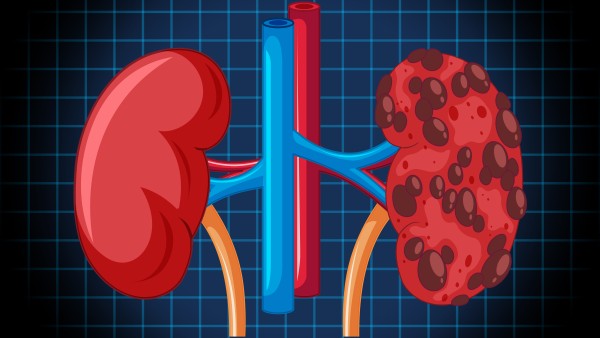Just In
- 1 min ago

- 4 hrs ago

- 13 hrs ago

- 17 hrs ago

Don't Miss
- Technology
 Moto G64 5G Launching in India at 12 noon Today: Check Full Specifications, Expected Pricing
Moto G64 5G Launching in India at 12 noon Today: Check Full Specifications, Expected Pricing - Movies
 Bade Miyan Chote Miyan Box Office Collection Day 6 Prediction: Akshay’s Film Struggles To Reach 50Cr In Week 1
Bade Miyan Chote Miyan Box Office Collection Day 6 Prediction: Akshay’s Film Struggles To Reach 50Cr In Week 1 - Sports
 ISL 2024 Playoffs Schedule: Qualified Teams, Dates, Venues, Telecast & Live Streaming Info
ISL 2024 Playoffs Schedule: Qualified Teams, Dates, Venues, Telecast & Live Streaming Info - Finance
 Fly For As Low As Rs 150 On Regional Connectivity Scheme Routes?
Fly For As Low As Rs 150 On Regional Connectivity Scheme Routes? - Automobiles
 MG Comet EV Emerges as a Trendsetter in India's Electric Vehicle Scene
MG Comet EV Emerges as a Trendsetter in India's Electric Vehicle Scene - News
 Foreign Entities Funding NGOs To Stall Public Projects: IT Dept Tells SC
Foreign Entities Funding NGOs To Stall Public Projects: IT Dept Tells SC - Education
 NEET PG 2024: Check the Registration and Exam Date Here
NEET PG 2024: Check the Registration and Exam Date Here - Travel
Maximise Your First Indian Adventure With These Travel Tips
15-Year-Old Girl With Fused Kidney Undergoes Robotic Surgery
A 15-year-old girl, born with a single-fused kidney, underwent a robotic surgery at a private facility here for the removal of a tennis ball-sized renal cyst, said doctors.

According to doctors at BLK-Max Super Speciality Hospital, the case was challenging as the doctors had to ensure the removal of the cyst with minimal damage to the solitary kidney of the child along with its blood vessels and ureter.
In this case, the renal vessels and ureter were abnormally intermingled with the cyst and injury to any of these structures would have been catastrophic to the patient, said the hospital.
The girl was born with developmental abnormalities that caused both her kidneys to fuse together on the left side and she had an absent right kidney.

She came to the hospital with complaints of on and off pain in the left flank for over 18 months.
The cyst measured 10X10 cm in size (size of a tennis ball) in the fused kidney with renal vessels and ureter around it, the hospital said.
"This was one of the most complicated cases to handle. After evaluation, we decided to perform high precision robotic surgery to remove the cyst," said Dr Surender Dabas, Senior Director & HOD, Surgical Oncology and Robotic Surgery, BLK- Max Super Specialty Hospital.
"She successfully underwent robotic excision of the cystic mass. Making use of robotic technology for meticulous dissection of the surrounding structures, blood vessels and ureters, the team was successfully able to dissect the cystic mass with minimal blood loss while preserving the surrounding structures," he said.
Due to the use of robotic surgery, the patient made a swift recovery without any post-op complications and was discharged on the fourth day after surgery.
Normally, doctors use open surgery to correct this condition, but they went for robotic surgery in this case since it is minimally invasive and causes less pain, blood loss and scarring and also helps in early postoperative recovery and less hospital stay, the doctor said.
"It also reduces the chances of surgical site infection and ensures quick discharge," he added.
The case was also challenging given the small frame of the child and smaller abdomen, the hospital said.
-
 wellness18 Low-Oxalate Foods That May Help Prevent The Risk Of Kidney Stones
wellness18 Low-Oxalate Foods That May Help Prevent The Risk Of Kidney Stones -
 wellnessWhat Is Culantro? Health Benefits, Side Effects And Recipes
wellnessWhat Is Culantro? Health Benefits, Side Effects And Recipes -
 wellnessCysts: Causes, Types, Symptoms & Treatment
wellnessCysts: Causes, Types, Symptoms & Treatment -
 disorders cureDigital Myxoid Cyst: Symptoms, Causes And Treatment
disorders cureDigital Myxoid Cyst: Symptoms, Causes And Treatment -
 disorders cureMucocele (Mucous Cyst): Causes, Symptoms And Treatment
disorders cureMucocele (Mucous Cyst): Causes, Symptoms And Treatment -
 wellnessEffective Lifestyle & Home Remedies for Breast Cyst
wellnessEffective Lifestyle & Home Remedies for Breast Cyst -
 wellnessDo You Have A Lump On Your Back, Neck Or Behind Your Ear? This Is What You Need To Know
wellnessDo You Have A Lump On Your Back, Neck Or Behind Your Ear? This Is What You Need To Know -
 wellnessEffective Home Remedies For Fibrocystic Breast
wellnessEffective Home Remedies For Fibrocystic Breast -
 wellnessAntibiotics Treating Cystic Fibrosis Can Be Dangerous, Know The Reasons
wellnessAntibiotics Treating Cystic Fibrosis Can Be Dangerous, Know The Reasons -
 wellness8 Warning Signs Of Ovarian Cyst That Every Woman Must Know
wellness8 Warning Signs Of Ovarian Cyst That Every Woman Must Know -
 disorders cureOral Contraceptive Pills Prevent Ovarian Cyst
disorders cureOral Contraceptive Pills Prevent Ovarian Cyst


 Click it and Unblock the Notifications
Click it and Unblock the Notifications



